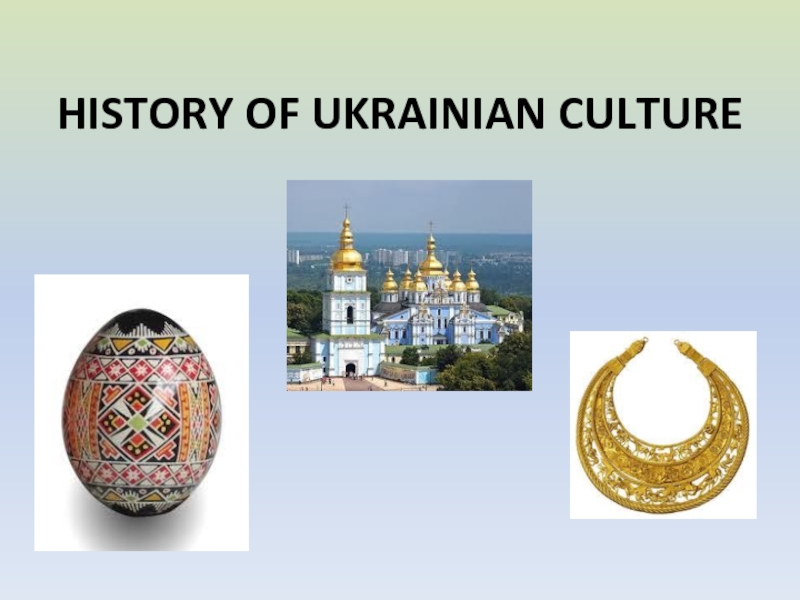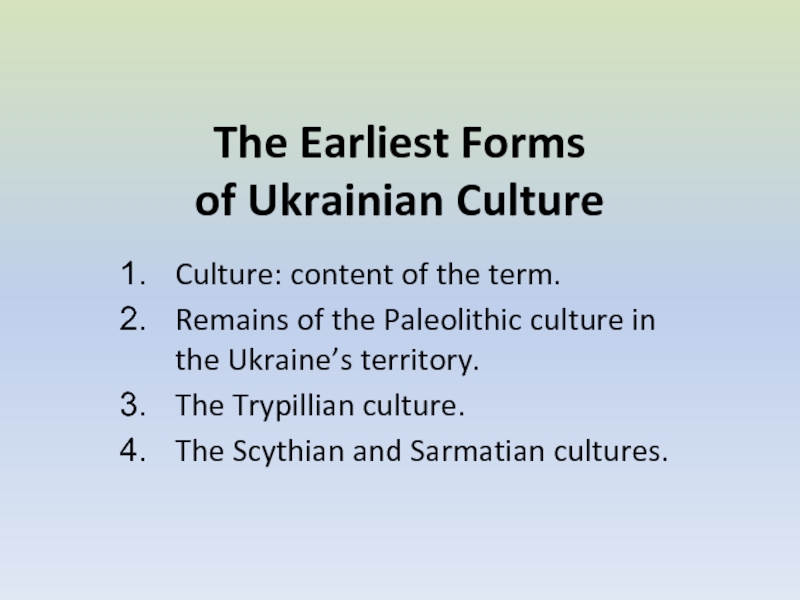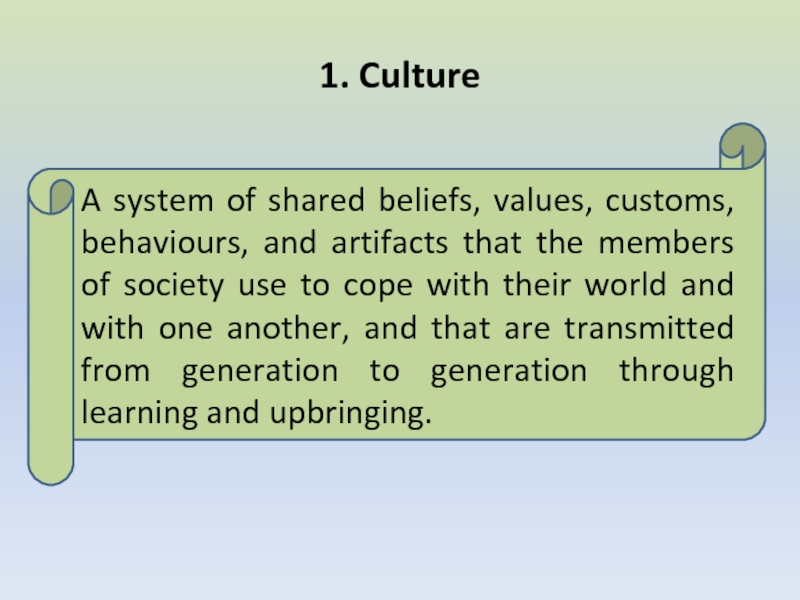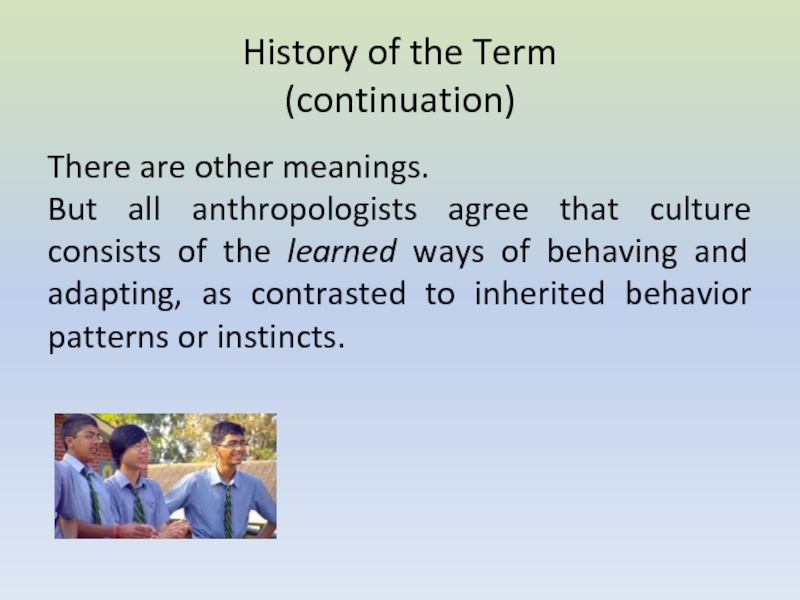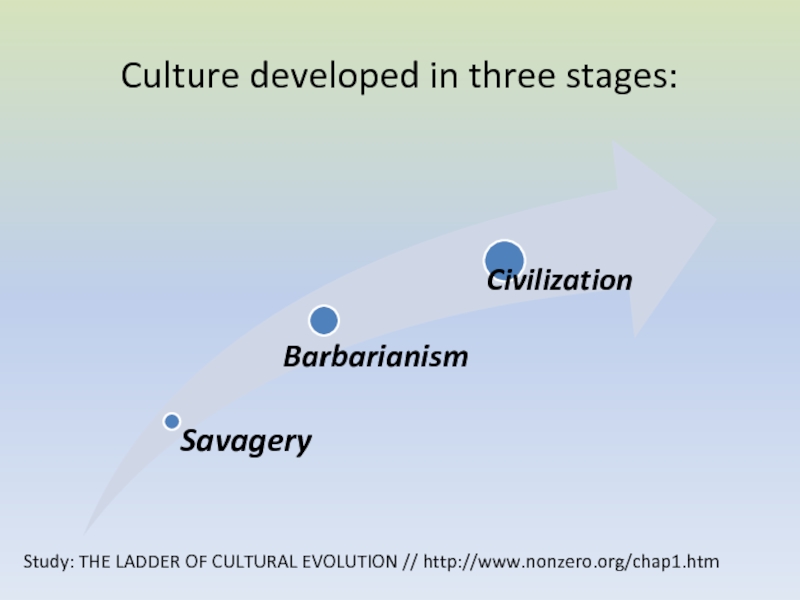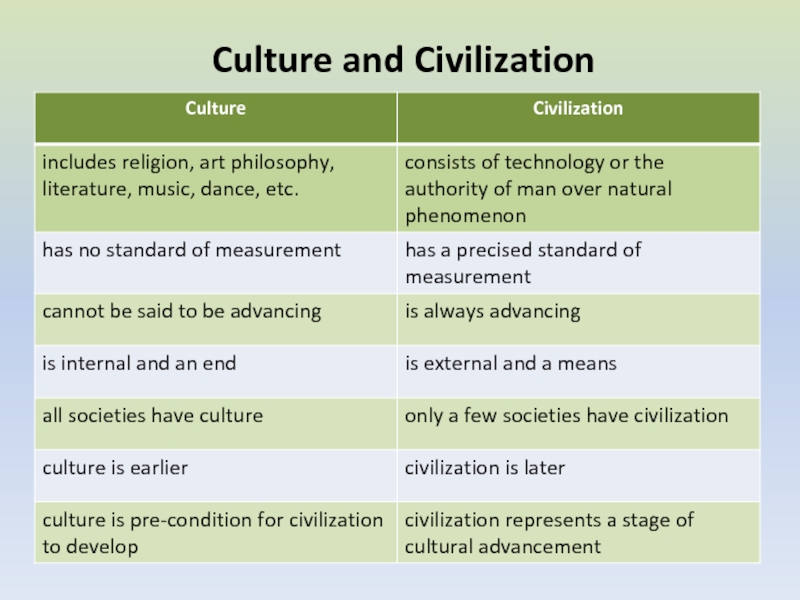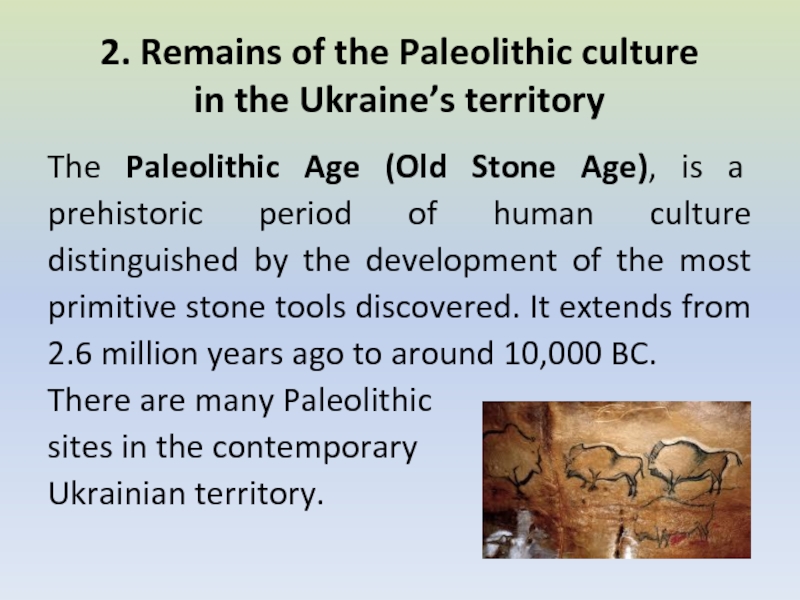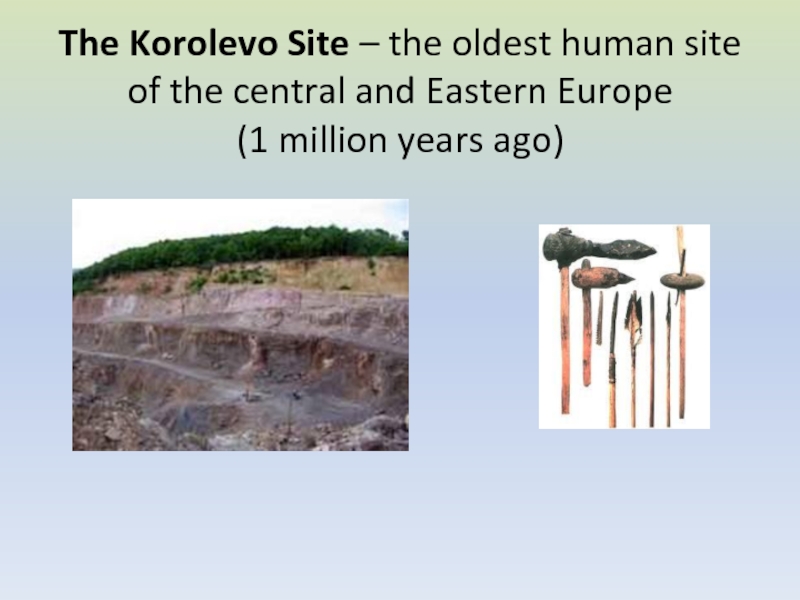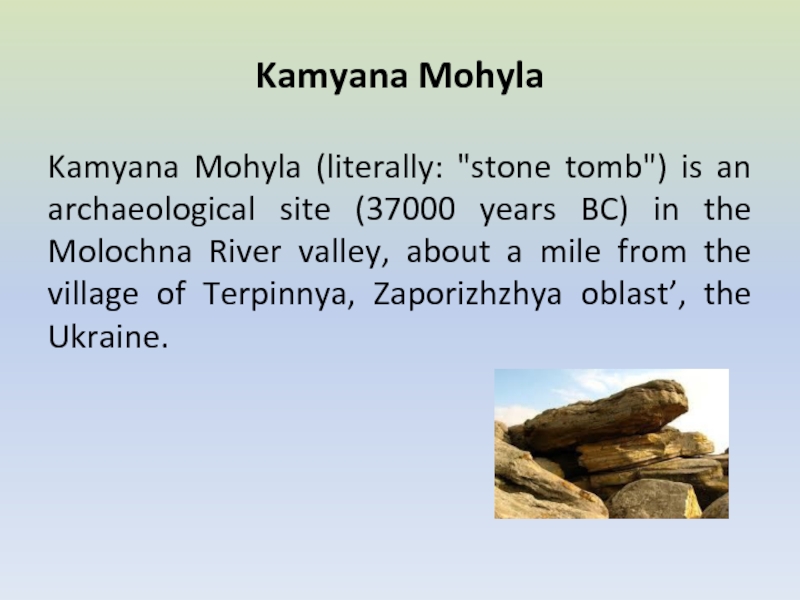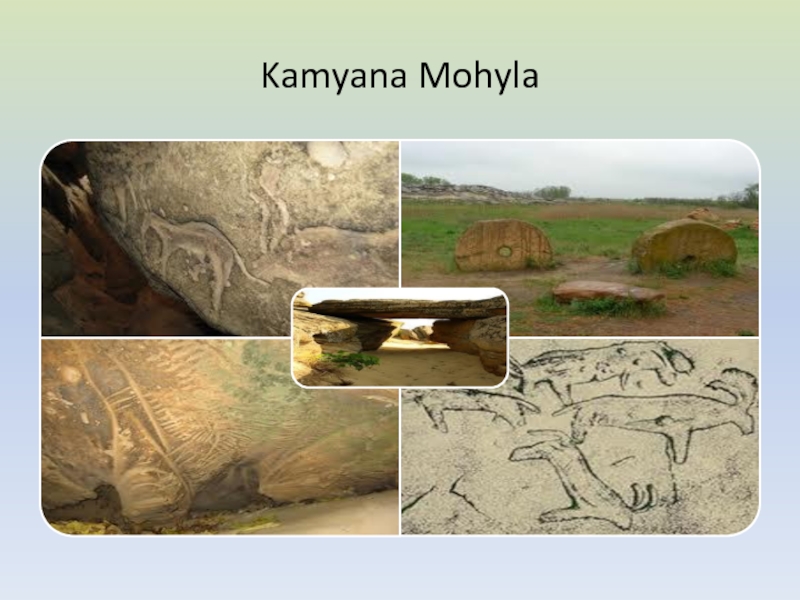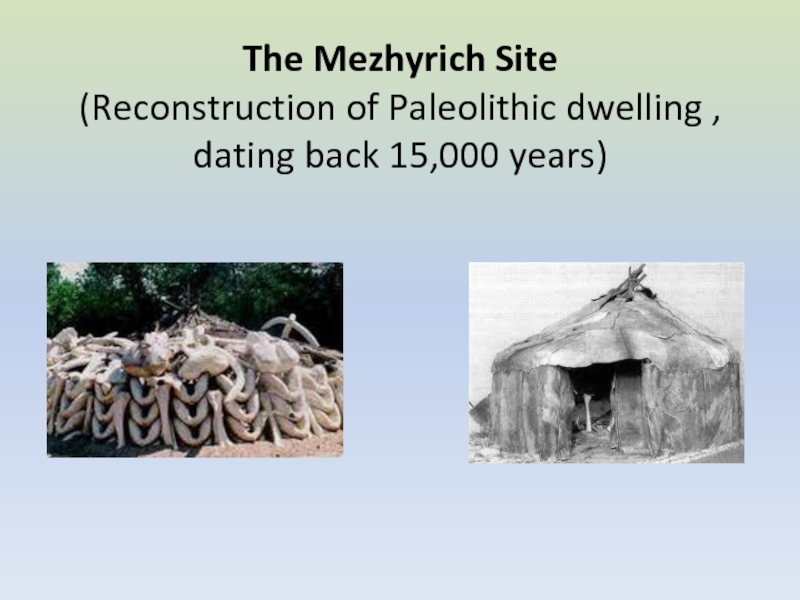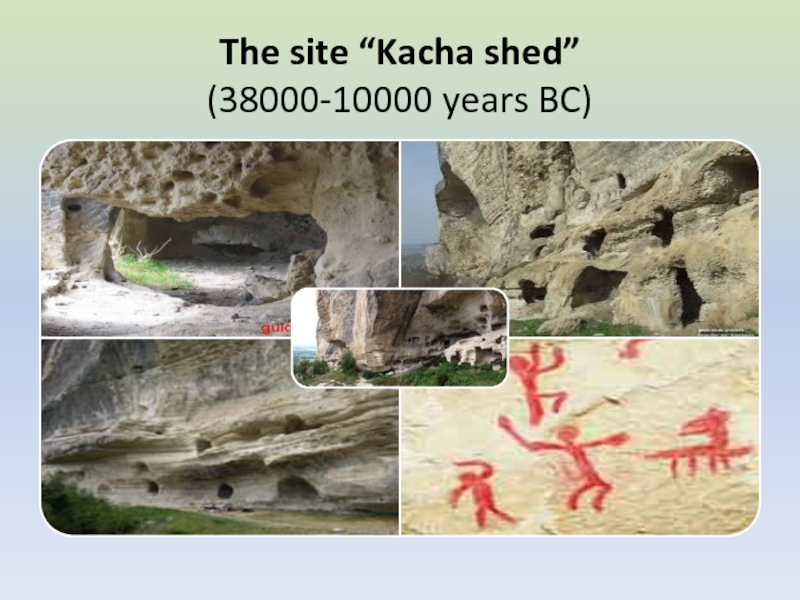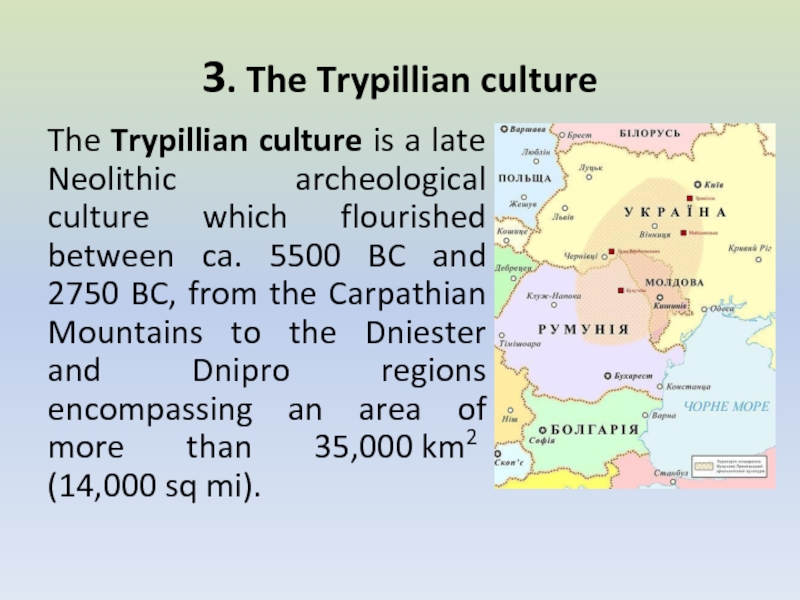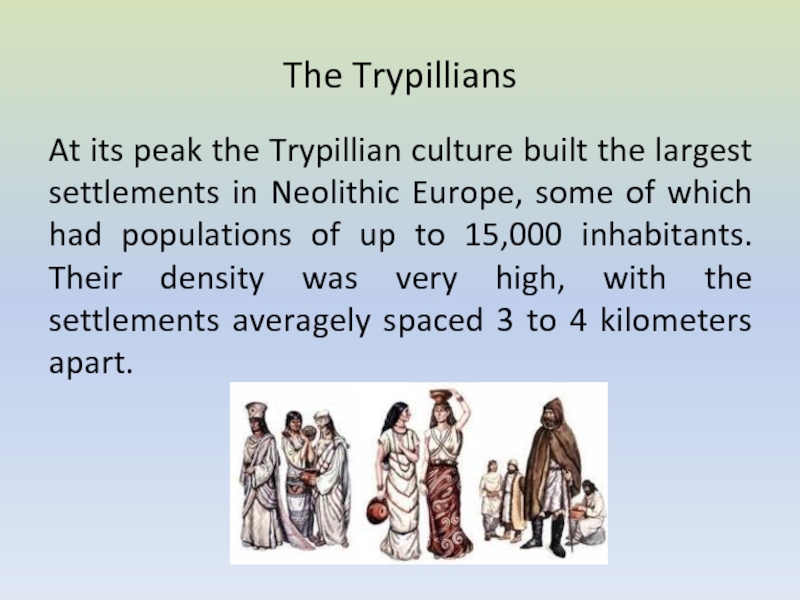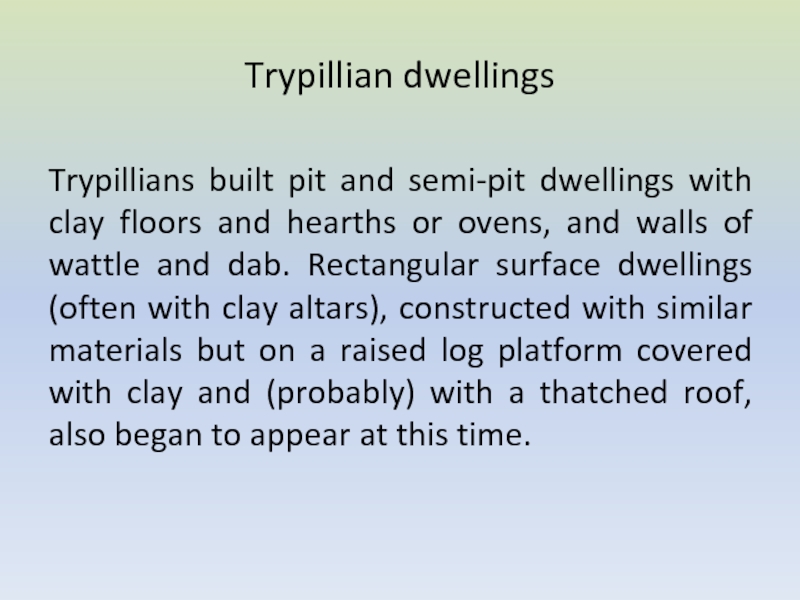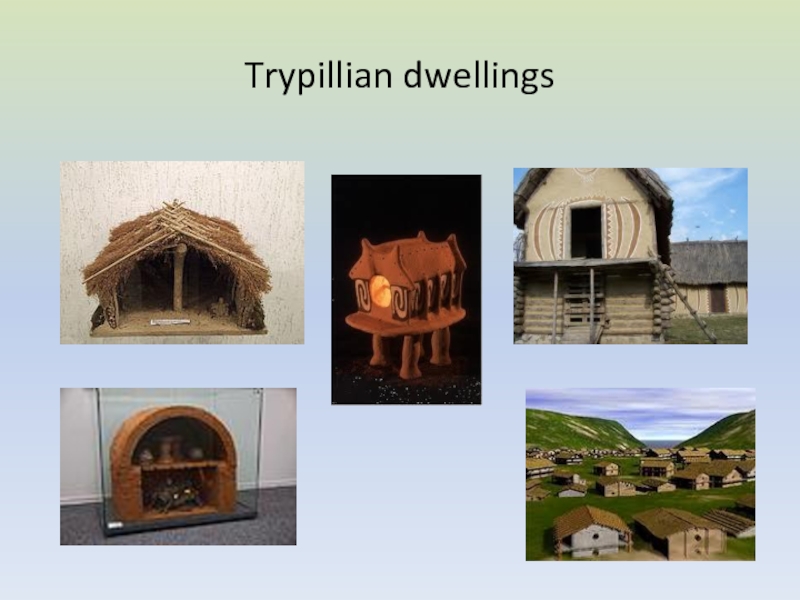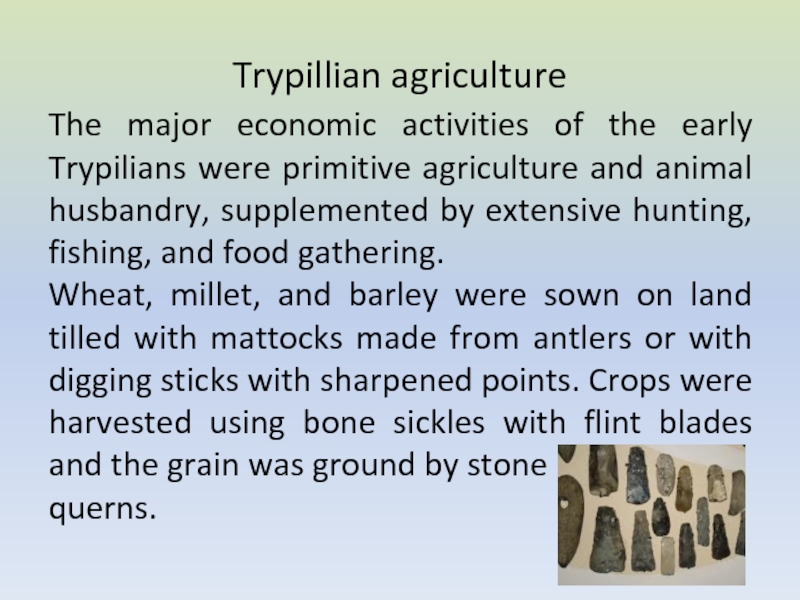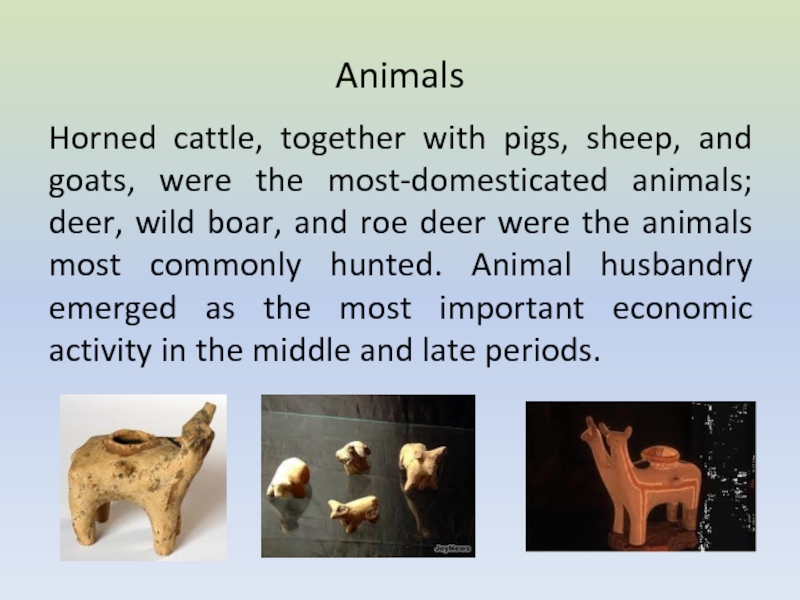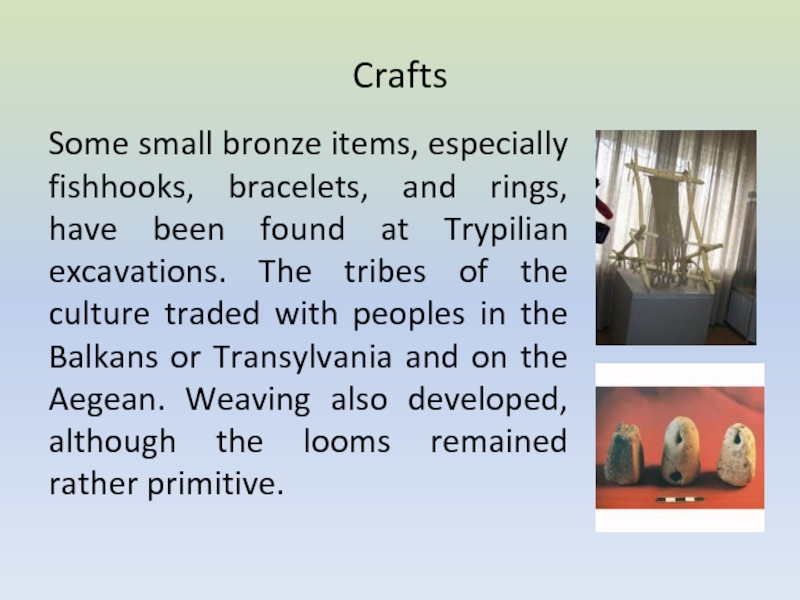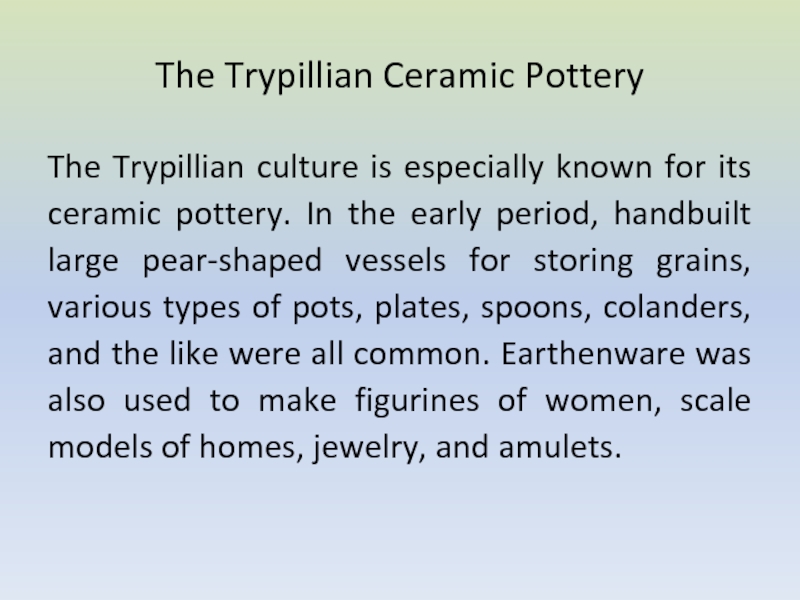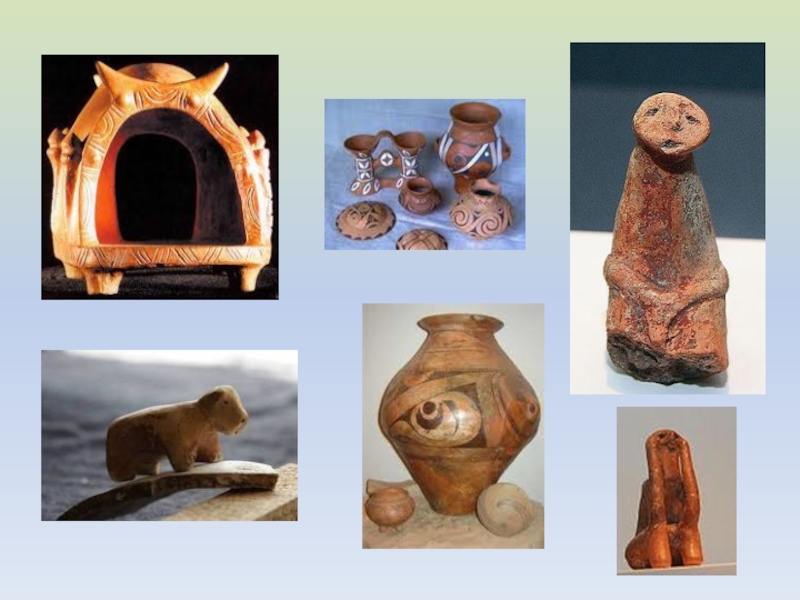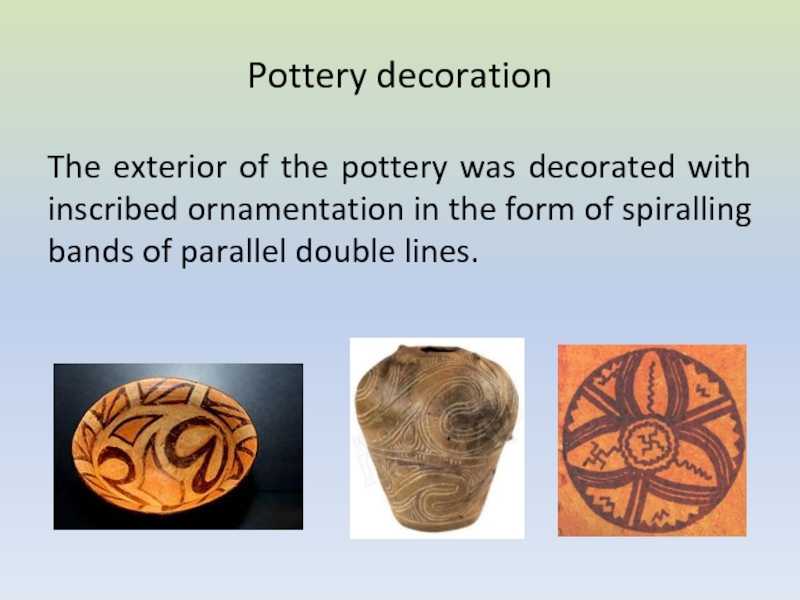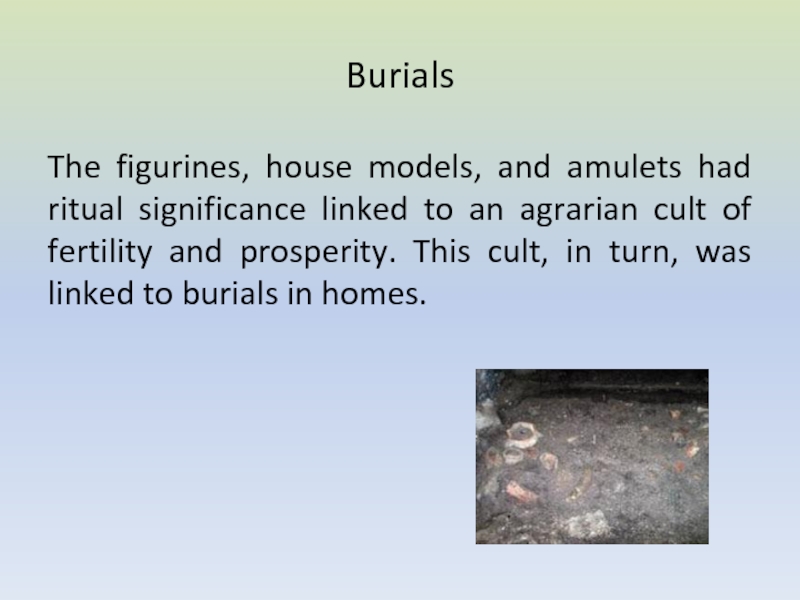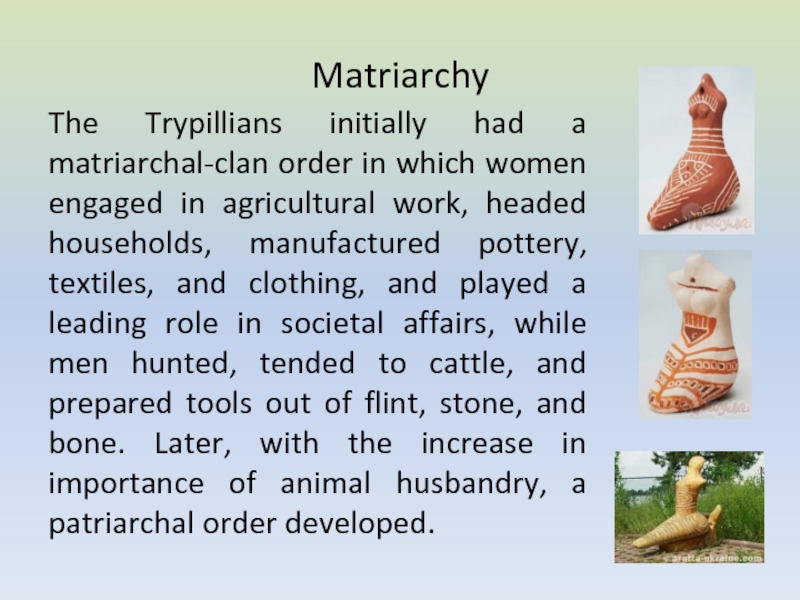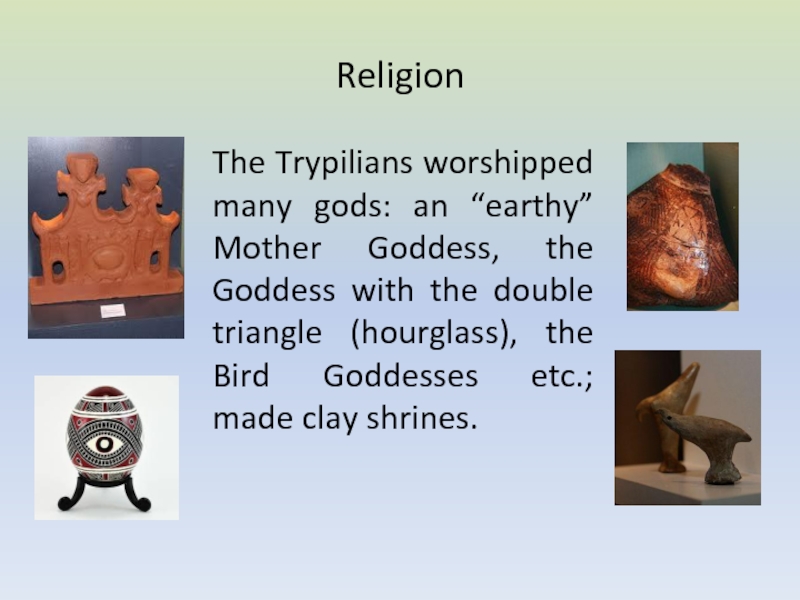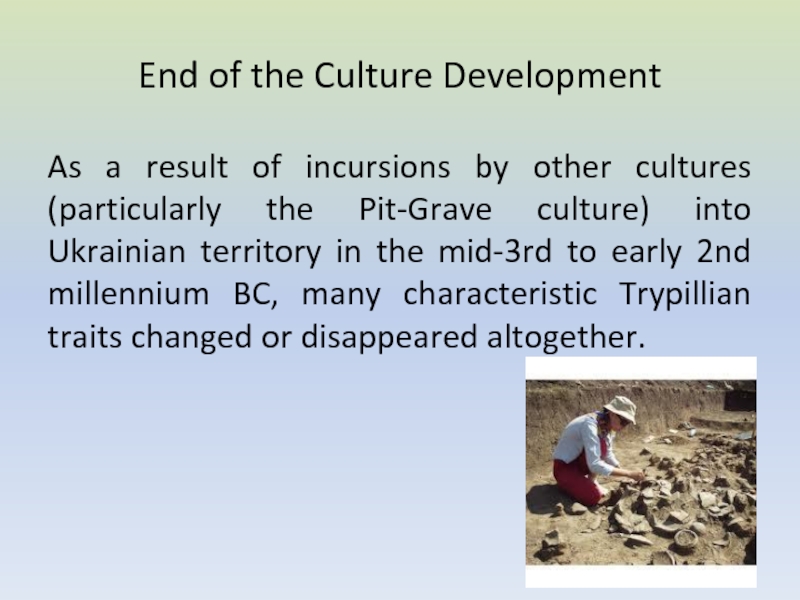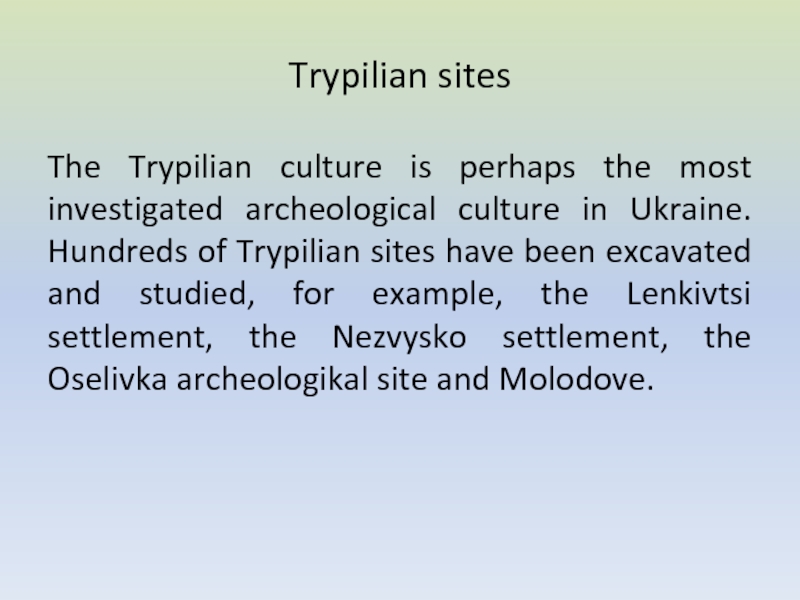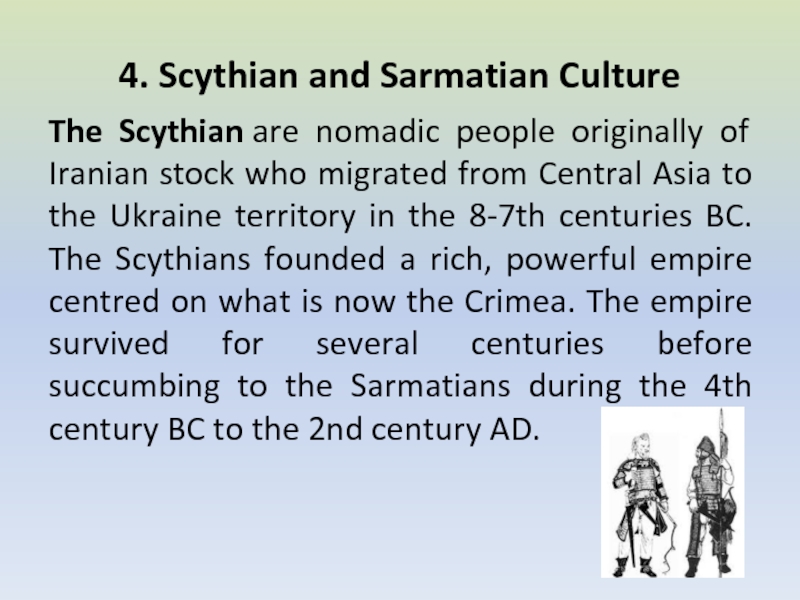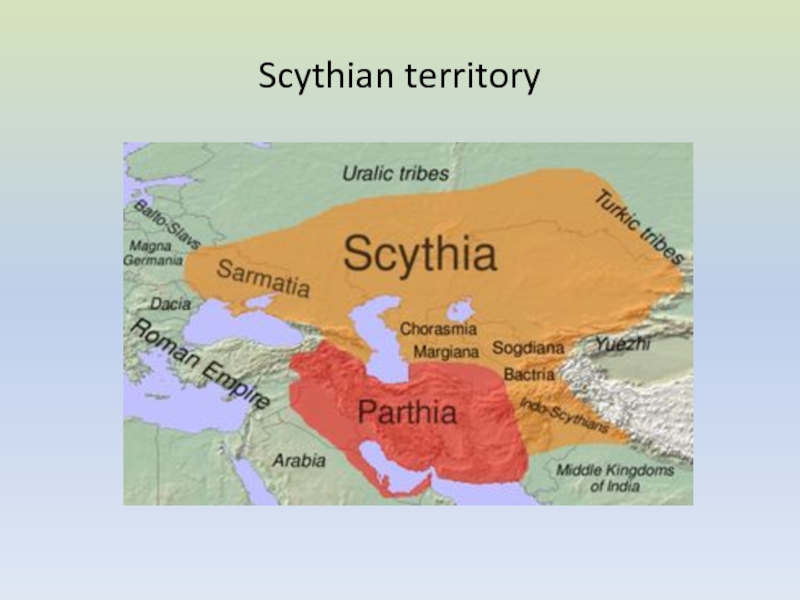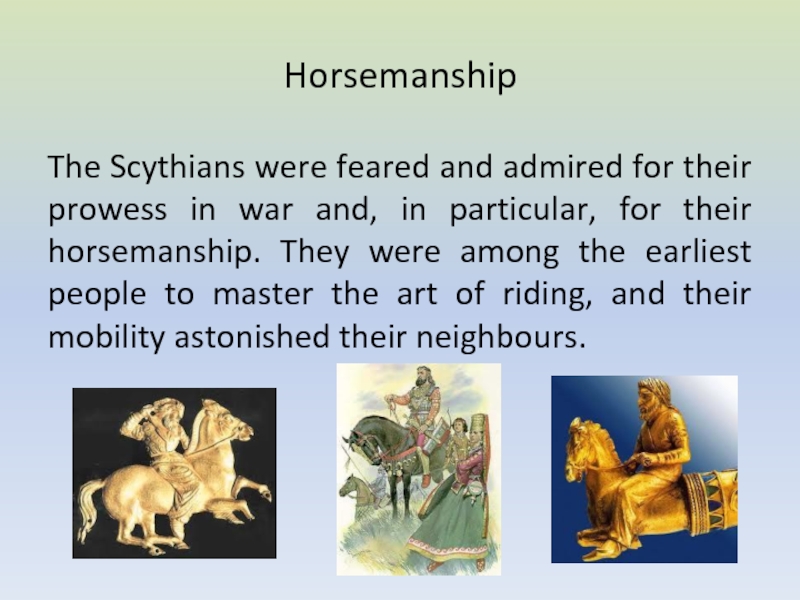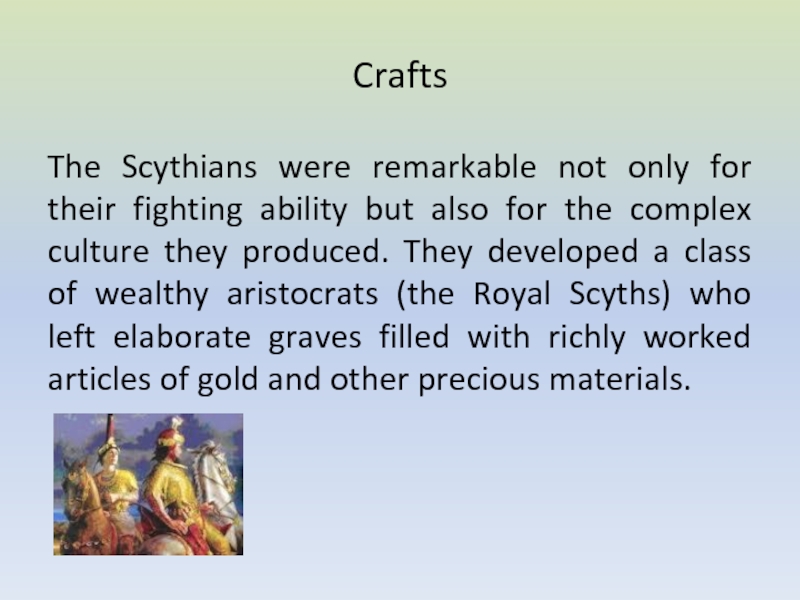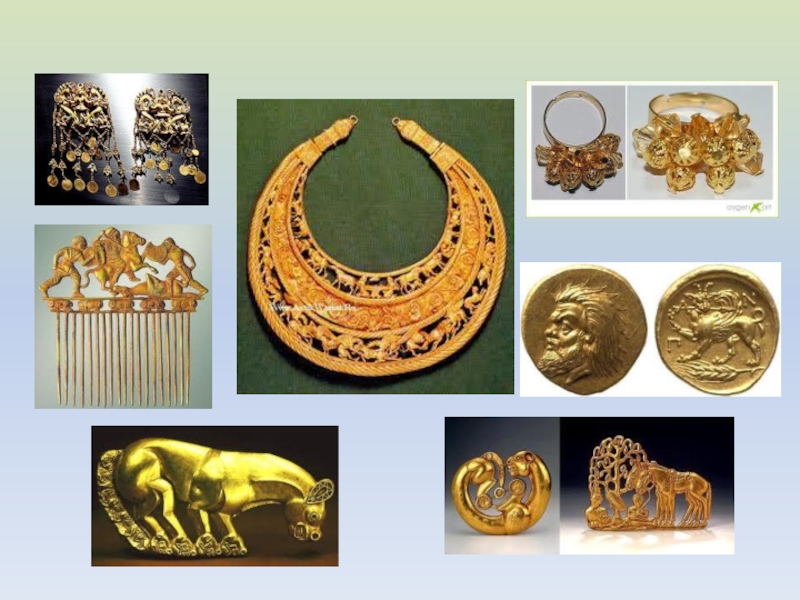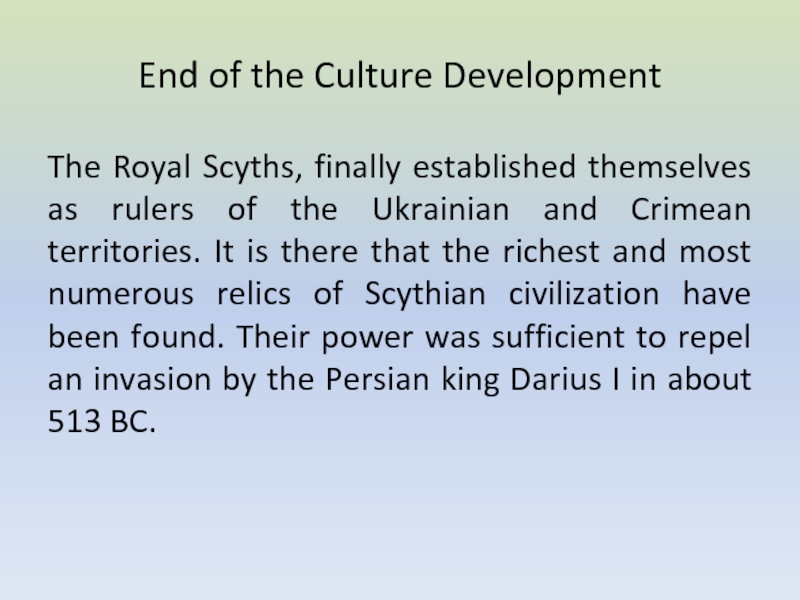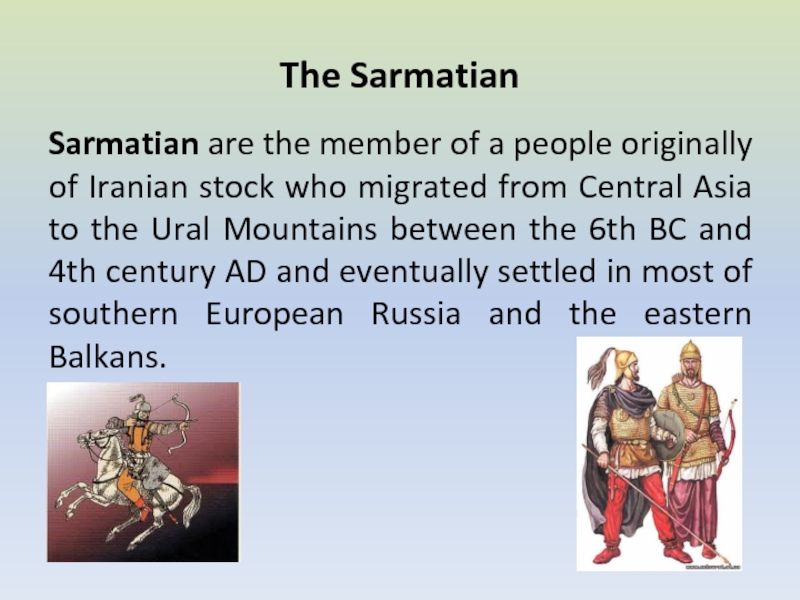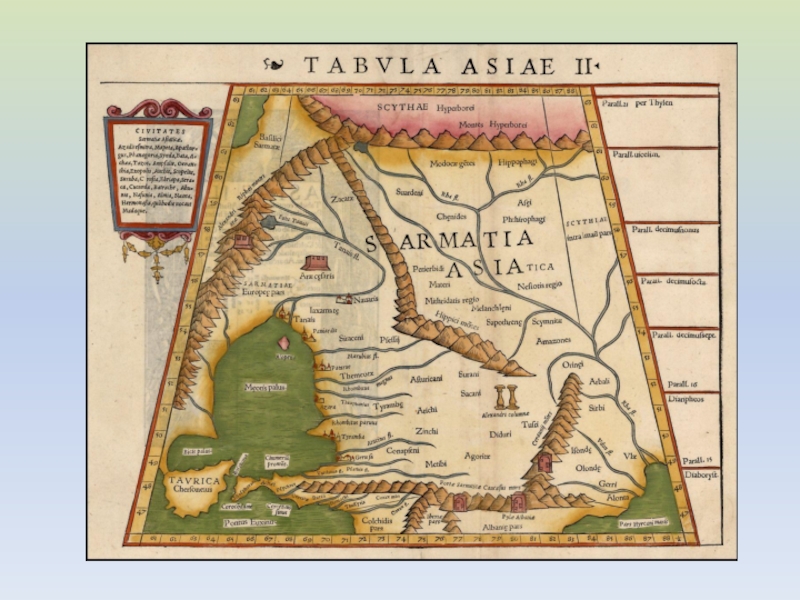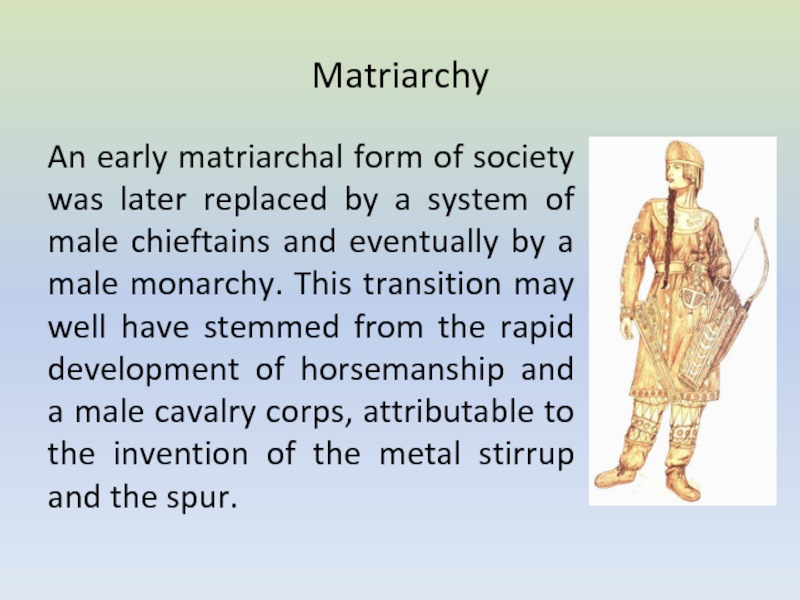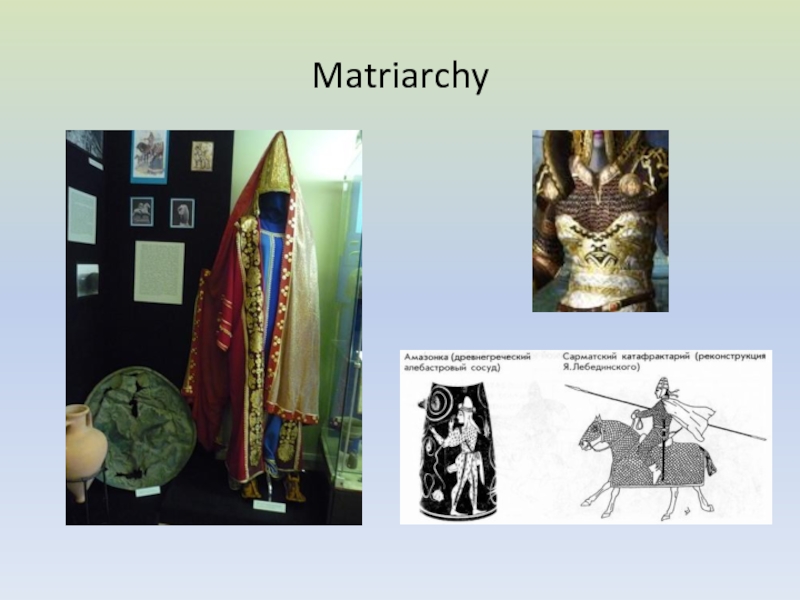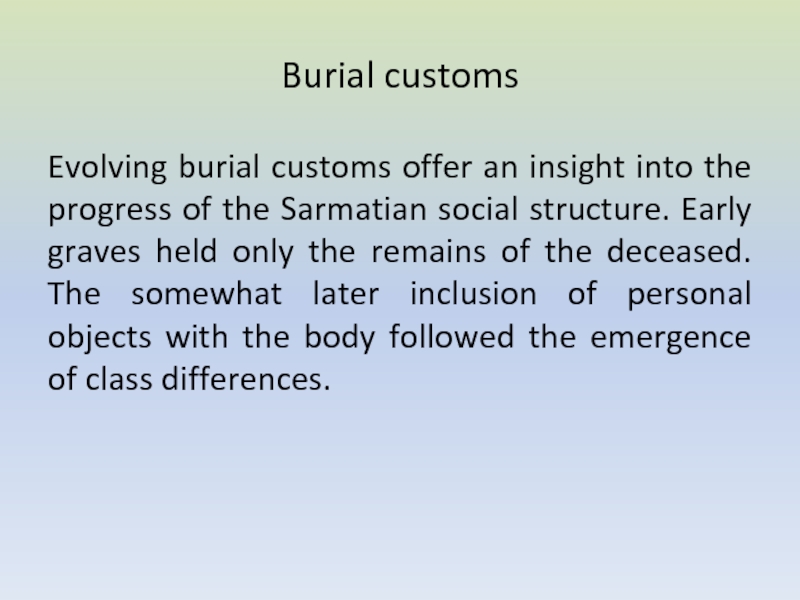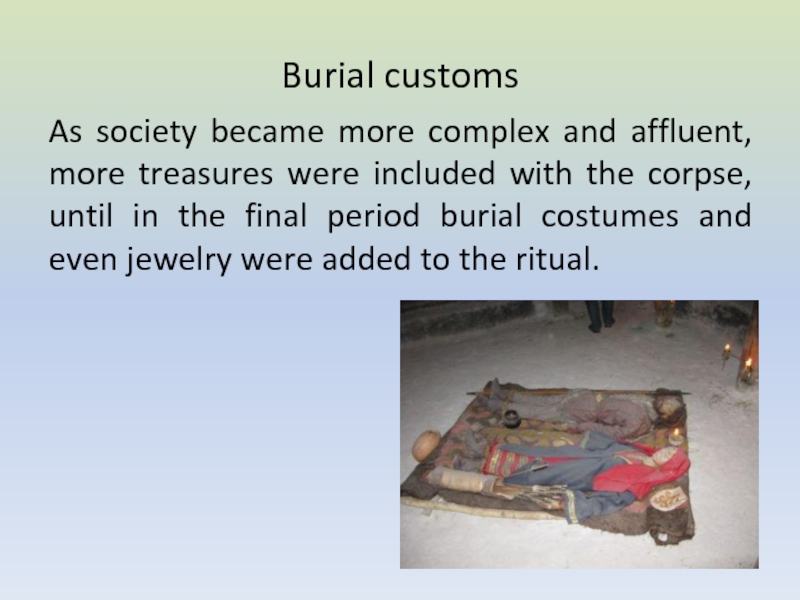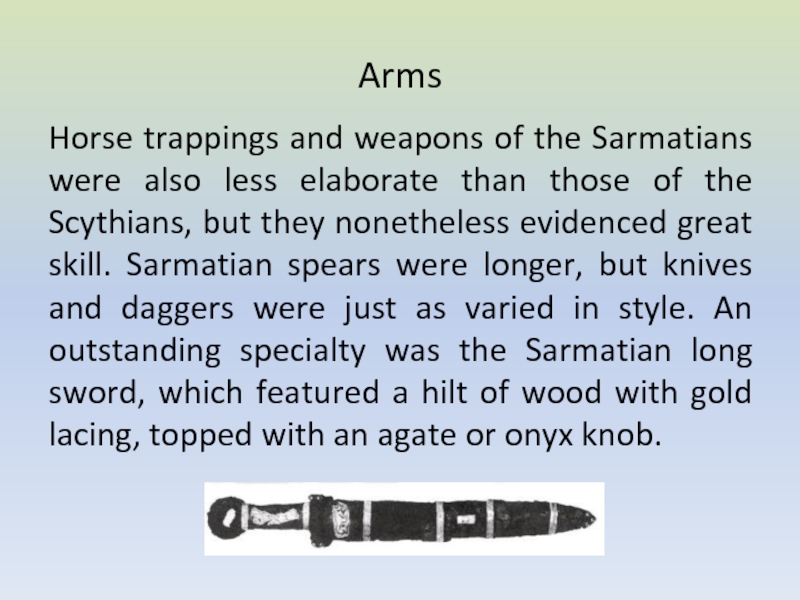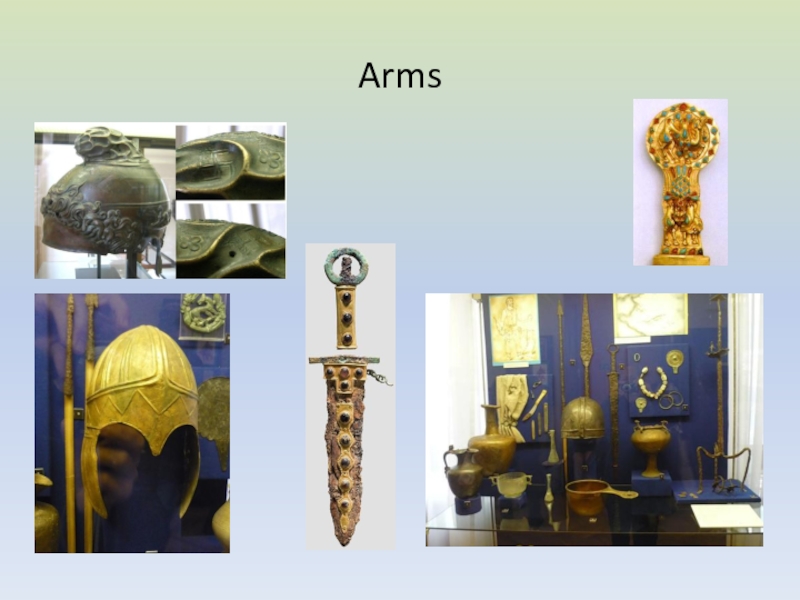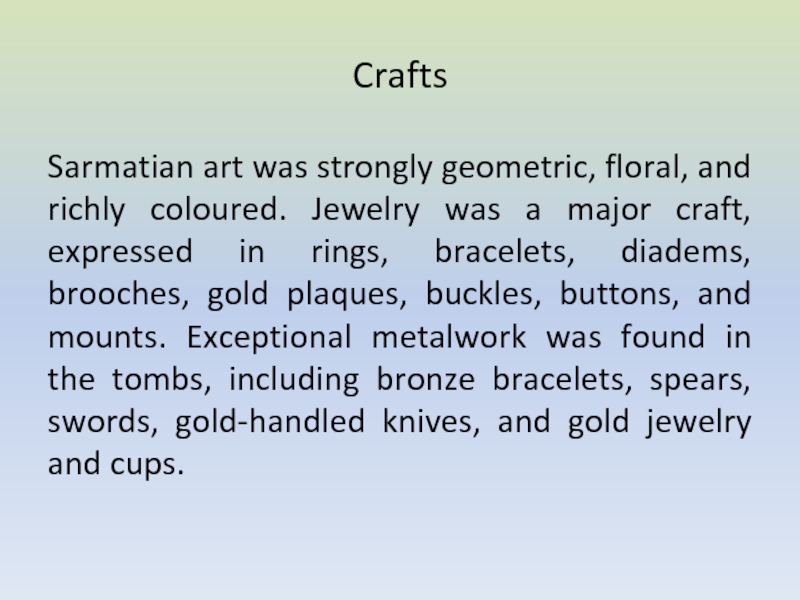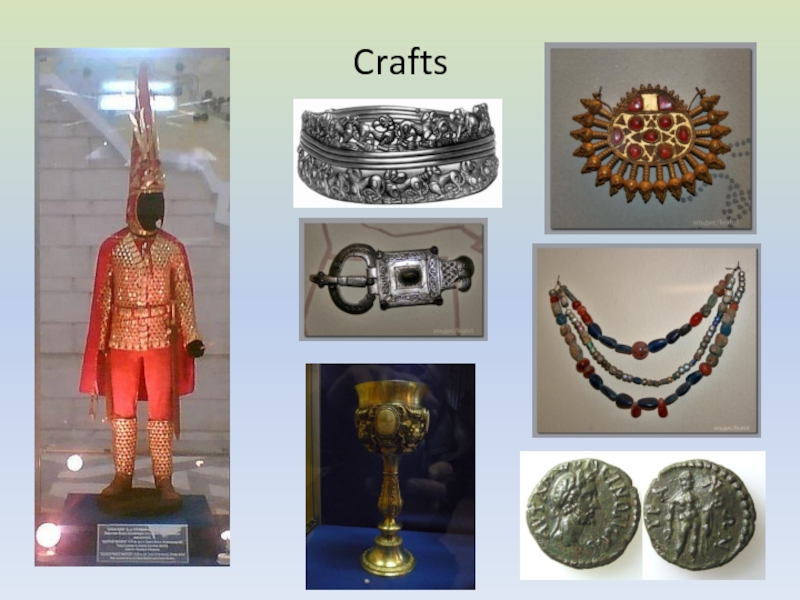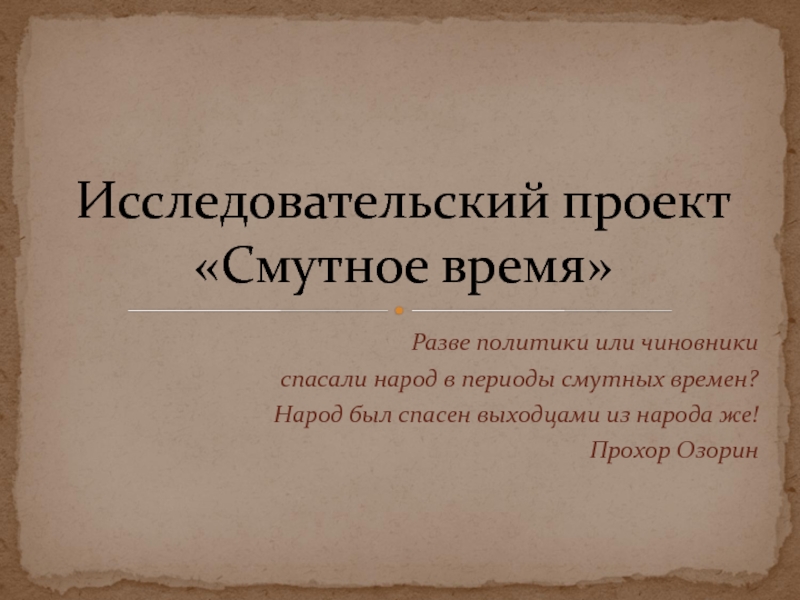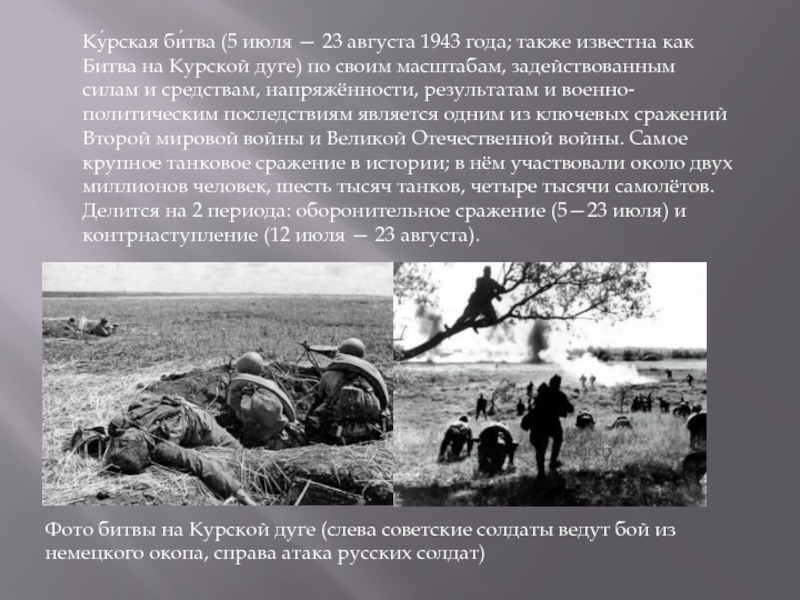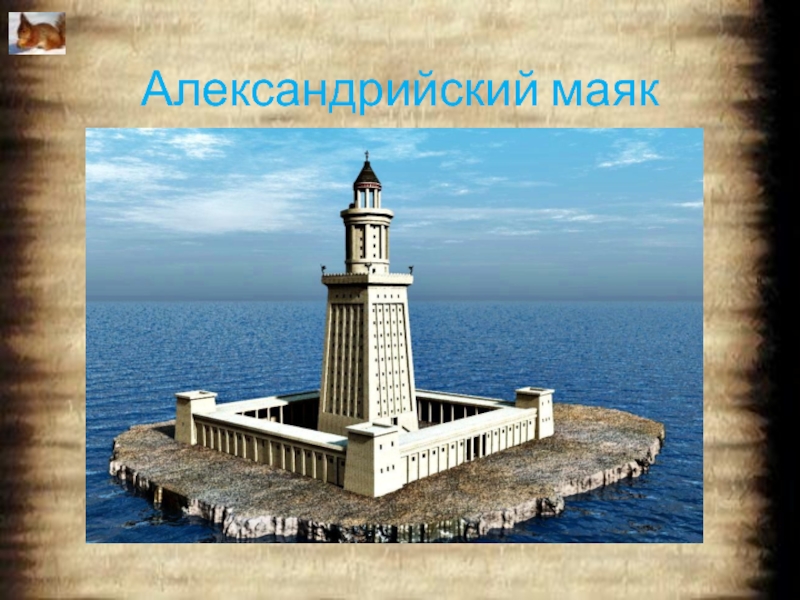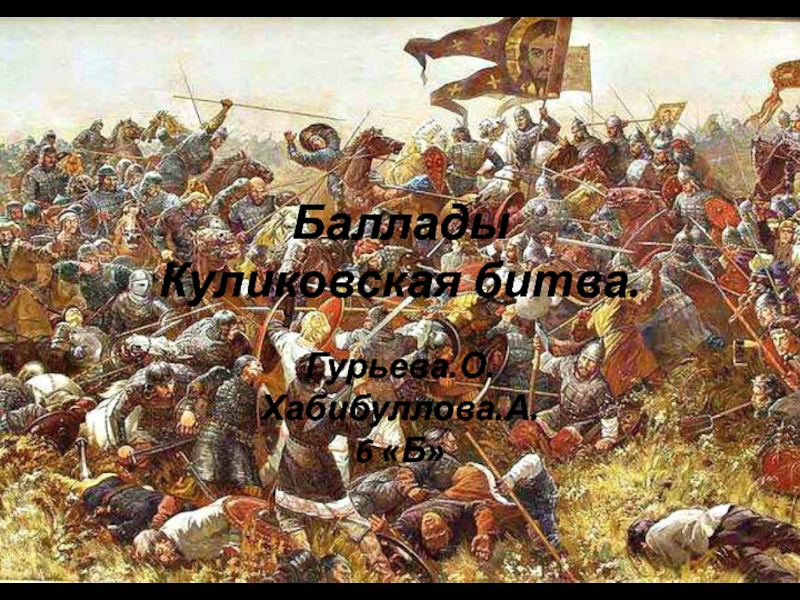- Главная
- Разное
- Дизайн
- Бизнес и предпринимательство
- Аналитика
- Образование
- Развлечения
- Красота и здоровье
- Финансы
- Государство
- Путешествия
- Спорт
- Недвижимость
- Армия
- Графика
- Культурология
- Еда и кулинария
- Лингвистика
- Английский язык
- Астрономия
- Алгебра
- Биология
- География
- Детские презентации
- Информатика
- История
- Литература
- Маркетинг
- Математика
- Медицина
- Менеджмент
- Музыка
- МХК
- Немецкий язык
- ОБЖ
- Обществознание
- Окружающий мир
- Педагогика
- Русский язык
- Технология
- Физика
- Философия
- Химия
- Шаблоны, картинки для презентаций
- Экология
- Экономика
- Юриспруденция
History of Ukrainian culture презентация
Содержание
- 1. History of Ukrainian culture
- 2. The Earliest Forms of Ukrainian Culture
- 3. 1. Culture A system of shared
- 4. History of the Term "Culture" as a
- 5. History of the Term (continuation) In the
- 6. History of the Term (continuation) There are
- 7. Culture developed in three stages: Study: THE LADDER OF CULTURAL EVOLUTION // http://www.nonzero.org/chap1.htm
- 8. Alfred Louis Kroeber (1876-1960) said Culture is
- 9. Culture and Civilization
- 10. 2. Remains of the Paleolithic culture
- 11. The Korolevo Site – the oldest human
- 12. Kamyana Mohyla Kamyana Mohyla (literally: "stone tomb")
- 13. Kamyana Mohyla
- 14. The Mezhyrich Site (Reconstruction of Paleolithic dwelling , dating back 15,000 years)
- 15. The site “Kacha shed” (38000-10000 years BC)
- 16. 3. The Trypillian culture The Trypillian culture
- 17. The Trypillians At its peak the Trypillian
- 18. Discovery It is named after a site
- 19. Trypillian dwellings Trypillians built pit and
- 20. Trypillian dwellings
- 21. Trypillian family Initially, extended families usually shared
- 22. Trypillian agriculture The major economic activities of
- 23. Animals Horned cattle, together with pigs, sheep,
- 24. Crafts Some small bronze items, especially fishhooks,
- 25. The Trypillian Ceramic Pottery The Trypillian culture
- 27. Pottery decoration The exterior of the pottery
- 28. Burials The figurines, house models, and amulets
- 29. Matriarchy The Trypillians initially had a matriarchal-clan
- 30. Religion The Trypilians worshipped many gods: an
- 31. End of the Culture Development As a
- 32. Trypilian sites The Trypilian culture is perhaps
- 33. 4. Scythian and Sarmatian Culture The Scythian are
- 34. Scythian territory
- 35. Horsemanship The Scythians were feared and admired
- 36. Crafts The Scythians were remarkable not only
- 38. The Religious Beliefs of the Scythians The
- 39. End of the Culture Development The Royal
- 40. The Sarmatian Sarmatian are the member of a
- 42. Matriarchy An early matriarchal form of society
- 43. Matriarchy
- 44. Burial customs Evolving burial customs offer an
- 45. Burial customs As society became more complex
- 46. Arms Horse trappings and weapons of the
- 47. Arms
- 48. Crafts Sarmatian art was strongly geometric, floral,
- 49. Crafts
Слайд 2The Earliest Forms
of Ukrainian Culture
Culture: content of the term.
Remains
of the Paleolithic culture in the Ukraine’s territory.
The Trypillian culture.
The Scythian and Sarmatian cultures.
The Trypillian culture.
The Scythian and Sarmatian cultures.
Слайд 31. Culture
A system of shared beliefs, values, customs, behaviours, and artifacts
that the members of society use to cope with their world and with one another, and that are transmitted from generation to generation through learning and upbringing.
Слайд 4History of the Term
"Culture" as a technical term emerged in the
writings of anthropologists in the mid-19th century.
The English anthropologist Sir Edward B. Tylor (1832-1917) used it to refer to the "complex whole" of ideas and things produced by men in their historical experience.
The English anthropologist Sir Edward B. Tylor (1832-1917) used it to refer to the "complex whole" of ideas and things produced by men in their historical experience.
Слайд 5History of the Term
(continuation)
In the 1930's Ruth Benedict (1887-1948) discussed culture
as a pattern of thinking and doing that runs through the activities of a people and distinguishes them from all other peoples.
In later years, culture became a term used to describe the distinctive human mode of adapting to the environment – molding nature to conform to man's desires and goals.
In later years, culture became a term used to describe the distinctive human mode of adapting to the environment – molding nature to conform to man's desires and goals.
Слайд 6History of the Term
(continuation)
There are other meanings.
But all anthropologists agree
that culture consists of the learned ways of behaving and adapting, as contrasted to inherited behavior patterns or instincts.
Слайд 7Culture developed in three stages:
Study: THE LADDER OF CULTURAL EVOLUTION //
http://www.nonzero.org/chap1.htm
Слайд 8Alfred Louis Kroeber (1876-1960) said Culture is super organic, he has
given three forms of culture:
Слайд 102. Remains of the Paleolithic culture
in the Ukraine’s territory
The Paleolithic
Age (Old Stone Age), is a prehistoric period of human culture distinguished by the development of the most primitive stone tools discovered. It extends from 2.6 million years ago to around 10,000 BC.
There are many Paleolithic
sites in the contemporary
Ukrainian territory.
There are many Paleolithic
sites in the contemporary
Ukrainian territory.
Слайд 11The Korolevo Site – the oldest human site of the central
and Eastern Europe
(1 million years ago)
Слайд 12Kamyana Mohyla
Kamyana Mohyla (literally: "stone tomb") is an archaeological site (37000
years BC) in the Molochna River valley, about a mile from the village of Terpinnya, Zaporizhzhya oblast’, the Ukraine.
Слайд 163. The Trypillian culture
The Trypillian culture is a late Neolithic archeological
culture which flourished between ca. 5500 BC and 2750 BC, from the Carpathian Mountains to the Dniester and Dnipro regions encompassing an area of more than 35,000 km2 (14,000 sq mi).
Слайд 17The Trypillians
At its peak the Trypillian culture built the largest settlements
in Neolithic Europe, some of which had populations of up to 15,000 inhabitants. Their density was very high, with the settlements averagely spaced 3 to 4 kilometers apart.
Слайд 18Discovery
It is named after a site near village Trypillya in the
Kyiv region uncovered by Vikentij Khvojka (1850-1914) in 1898.
Слайд 19Trypillian dwellings
Trypillians built pit and semi-pit dwellings with clay floors and
hearths or ovens, and walls of wattle and dab. Rectangular surface dwellings (often with clay altars), constructed with similar materials but on a raised log platform covered with clay and (probably) with a thatched roof, also began to appear at this time.
Слайд 21Trypillian family
Initially, extended families usually shared a single dwelling and houses
were simply enlarged to accommodate new members, but from the middle period nuclear families generally occupied their own dwellings.
Слайд 22Trypillian agriculture
The major economic activities of the early Trypilians were primitive
agriculture and animal husbandry, supplemented by extensive hunting, fishing, and food gathering.
Wheat, millet, and barley were sown on land tilled with mattocks made from antlers or with digging sticks with sharpened points. Crops were harvested using bone sickles with flint blades and the grain was ground by stone
querns.
Wheat, millet, and barley were sown on land tilled with mattocks made from antlers or with digging sticks with sharpened points. Crops were harvested using bone sickles with flint blades and the grain was ground by stone
querns.
Слайд 23Animals
Horned cattle, together with pigs, sheep, and goats, were the most-domesticated
animals; deer, wild boar, and roe deer were the animals most commonly hunted. Animal husbandry emerged as the most important economic activity in the middle and late periods.
Слайд 24Crafts
Some small bronze items, especially fishhooks, bracelets, and rings, have been
found at Trypilian excavations. The tribes of the culture traded with peoples in the Balkans or Transylvania and on the Aegean. Weaving also developed, although the looms remained rather primitive.
Слайд 25The Trypillian Ceramic Pottery
The Trypillian culture is especially known for its
ceramic pottery. In the early period, handbuilt large pear-shaped vessels for storing grains, various types of pots, plates, spoons, colanders, and the like were all common. Earthenware was also used to make figurines of women, scale models of homes, jewelry, and amulets.
Слайд 27Pottery decoration
The exterior of the pottery was decorated with inscribed ornamentation
in the form of spiralling bands of parallel double lines.
Слайд 28Burials
The figurines, house models, and amulets had ritual significance linked to
an agrarian cult of fertility and prosperity. This cult, in turn, was linked to burials in homes.
Слайд 29Matriarchy
The Trypillians initially had a matriarchal-clan order in which women engaged
in agricultural work, headed households, manufactured pottery, textiles, and clothing, and played a leading role in societal affairs, while men hunted, tended to cattle, and prepared tools out of flint, stone, and bone. Later, with the increase in importance of animal husbandry, a patriarchal order developed.
Слайд 30Religion
The Trypilians worshipped many gods: an “earthy” Mother Goddess, the Goddess
with the double triangle (hourglass), the Bird Goddesses etc.; made clay shrines.
Слайд 31End of the Culture Development
As a result of incursions by other
cultures (particularly the Pit-Grave culture) into Ukrainian territory in the mid-3rd to early 2nd millennium BC, many characteristic Trypillian traits changed or disappeared altogether.
Слайд 32Trypilian sites
The Trypilian culture is perhaps the most investigated archeological culture
in Ukraine. Hundreds of Trypilian sites have been excavated and studied, for example, the Lenkivtsi settlement, the Nezvysko settlement, the Oselivka archeologikal site and Molodove.
Слайд 334. Scythian and Sarmatian Culture
The Scythian are nomadic people originally of Iranian
stock who migrated from Central Asia to the Ukraine territory in the 8-7th centuries BC. The Scythians founded a rich, powerful empire centred on what is now the Crimea. The empire survived for several centuries before succumbing to the Sarmatians during the 4th century BC to the 2nd century AD.
Слайд 35Horsemanship
The Scythians were feared and admired for their prowess in war
and, in particular, for their horsemanship. They were among the earliest people to master the art of riding, and their mobility astonished their neighbours.
Слайд 36Crafts
The Scythians were remarkable not only for their fighting ability but
also for the complex culture they produced. They developed a class of wealthy aristocrats (the Royal Scyths) who left elaborate graves filled with richly worked articles of gold and other precious materials.
Слайд 38The Religious Beliefs of the Scythians
The religious beliefs of the Scythians
was a type of Pre-Zoroastrian Iranian religion. Foremost in the Scythian pantheon stood Atar, the fire-pantheon of Iranian tribes, and Agni, the fire deity of Indo-Aryans. The Scythians use of cannabis to induce trance and divination by soothsayers was a characteristic of the Scythian belief system.
Слайд 39End of the Culture Development
The Royal Scyths, finally established themselves as
rulers of the Ukrainian and Crimean territories. It is there that the richest and most numerous relics of Scythian civilization have been found. Their power was sufficient to repel an invasion by the Persian king Darius I in about 513 BC.
Слайд 40The Sarmatian
Sarmatian are the member of a people originally of Iranian stock
who migrated from Central Asia to the Ural Mountains between the 6th BC and 4th century AD and eventually settled in most of southern European Russia and the eastern Balkans.
Слайд 42Matriarchy
An early matriarchal form of society was later replaced by a
system of male chieftains and eventually by a male monarchy. This transition may well have stemmed from the rapid development of horsemanship and a male cavalry corps, attributable to the invention of the metal stirrup and the spur.
Слайд 44Burial customs
Evolving burial customs offer an insight into the progress of
the Sarmatian social structure. Early graves held only the remains of the deceased. The somewhat later inclusion of personal objects with the body followed the emergence of class differences.
Слайд 45Burial customs
As society became more complex and affluent, more treasures were
included with the corpse, until in the final period burial costumes and even jewelry were added to the ritual.
Слайд 46Arms
Horse trappings and weapons of the Sarmatians were also less elaborate
than those of the Scythians, but they nonetheless evidenced great skill. Sarmatian spears were longer, but knives and daggers were just as varied in style. An outstanding specialty was the Sarmatian long sword, which featured a hilt of wood with gold lacing, topped with an agate or onyx knob.
Слайд 48Crafts
Sarmatian art was strongly geometric, floral, and richly coloured. Jewelry was
a major craft, expressed in rings, bracelets, diadems, brooches, gold plaques, buckles, buttons, and mounts. Exceptional metalwork was found in the tombs, including bronze bracelets, spears, swords, gold-handled knives, and gold jewelry and cups.
